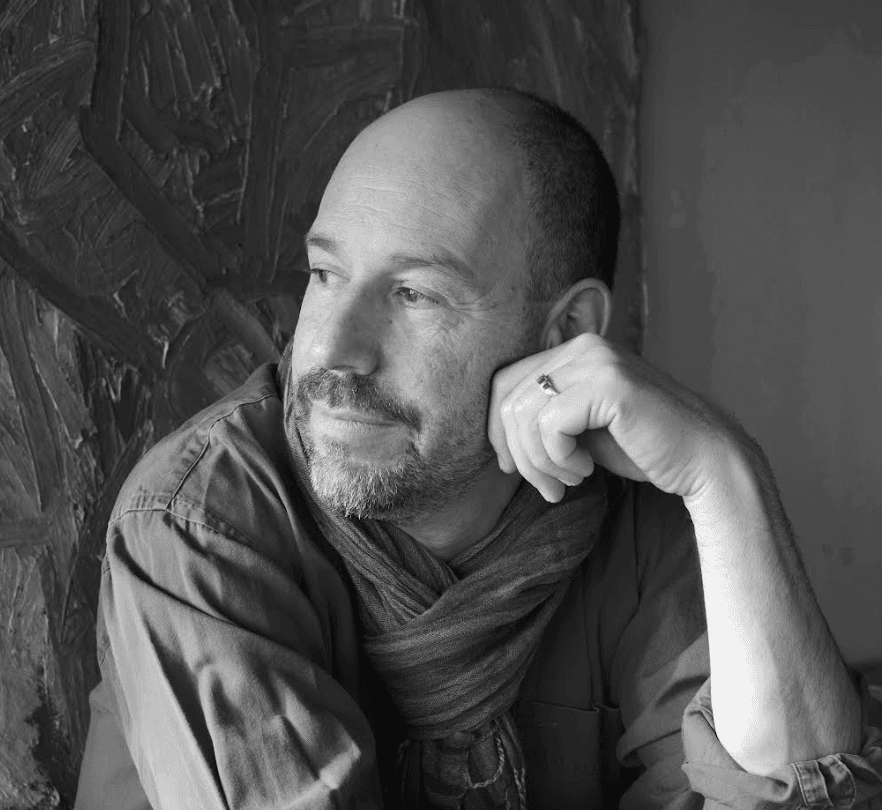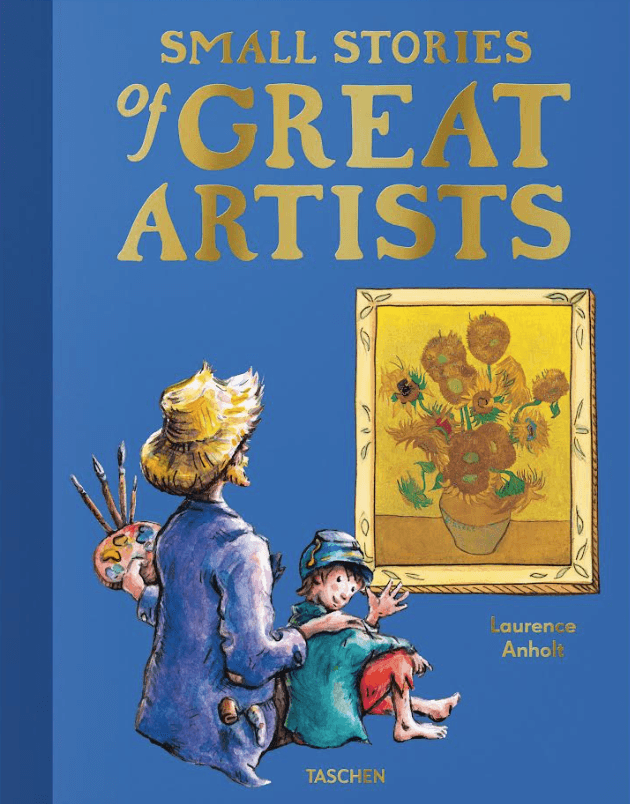I’m delighted to welcome Laurence Anholt into The Reading Realm to talk about his new book SMALL STORIES OF GREAT ARTISTS!

I was recently referred to as a ‘veteran author/illustrator’, which gave me a bit of a moment. I can’t deny that I have less hair than my festival-going days, and I happily acknowledge that I’m now a grandad of four beautiful grandchildren. It’s also true that I’ve been knocking around in publishing a long time – more than 200 books over 35 years if you really want to know.
I suppose I’m unusual in that I’ve worked across every conceivable age – from baby board books, through picture books, early readers, young adult fiction and recently an adult crime series – the Mindful Detective, which is set in my home turf of the Westcountry and features a reluctant Buddhist cop who feels too much for his own good.
But the reason I resist the term veteran is because I have never been so busy and full of ideas and ambitions. I am especially proud of my latest self-illustrated venture – SMALL STORIES OF GREAT ARTISTS is a hefty 336-page anthology of my long-running series about great artists and the real children who knew them. For the last two years, I’ve worked in collaboration with the wonderful team at Taschen publishers in Cologne. Our aim was to create a beautiful object for a child to handle, which would provide a springboard into a lifetime’s love of art. Using Taschen’s expertise in the Art publishing world, we were able to include dozens of high-quality reproductions of the artists’ work alongside my stories and illustrations. There are also child-friendly biographies… even a silky ribbon bookmark. I’m so happy with the outcome, and I’ve dedicated the book to my grandchildren ‘with a starry night of kisses.’

You might think that those artists – Van Gogh, Frida Kahlo, Monet, Picasso and many more – would be the central protagonists; but what makes my stories a little unusual is that the events are seen through the eyes of the real children who actually met them. Children like Degas’s Little Dancer, or Mariana who sat for Frida and became a lifelong friend. My belief is that young readers, who sometimes struggle to relate to those remote and slightly alarming geniuses, can easily identify with the children in the stories, and almost piggyback through the real-life narratives that unfold.
Writing for children doesn’t exclude extensive research. When I begin each story, I set out on a kind of detective chase – travelling to the places where the artists lived; even tracking down descendants of the artists and the children who knew them. While working on The Magical Garden of Claude Monet, my publishers obtained permission for me to visit Monet’s house in Giverny when it was closed to the public. I would turn up each morning before dawn; the night watchman unlocked the door, and I had the extraordinary experience of wandering around Monet’s house on my own. I literally composed my story sitting at the old man’s desk as the sun rose over the lilyponds.
When my US publisher asked me to develop a story about Picasso, I immediately ran into problems because the family were very guarded. Having followed countless false leads, I was almost ready to give up, when serendipity intervened. One night at a dinner party in my hometown of Lyme Regis, I found myself sitting next to an elderly but elegant artist who told me she had seen my children’s series about great artists. “Of course you must do a book about Picasso!” she suggested in a thick French accent. To my absolute astonishment, my dinner companion turned out to be none other than Sylvette David, Picasso’s famous Girl with a Ponytail. We became great friends and the ensuing picture book, Picasso and the Girl with a Ponytail was her account of an astonishing summer in Vallauris in 1954, in which that shy and beautiful teenager attained worldwide fame as Picasso’s muse. As she turns ninety, Sylvette David (now Lydia Corbett) remains every bit as stylish and creative as she was then.
Art has always been my passion. My wife Catherine is a painter, and our son Tom creates huge dreamlike works from his studio in Berlin. I trained originally as a Fine Artist, culminating in a Master’s Degree from the Royal Academy. My father was Dutch, so I spent my early years in the Netherlands and that’s where I fell in love with van Gogh. Seeing those paintings for the first time felt like being sucked inside a swirling multi-coloured snowstorm. It made me as giddy as a fairground. Van Gogh was a visionary, a man of huge empathy and wisdom, but also an outsider. Camille and the Sunflowers became my first self-illustrated children’s book. A seemingly simple tale about prejudice and tolerance, it tells the story of how that lonesome genius was treated with contempt when he moved from Paris to Arles; befriended only by Camille and his father, the Postmaster Roulin, who became frequent visitors at the Yellow House. That book went on to sell several million copies in many languages and it was adapted in many forms, including a full-scale stage musical in Korea.
My wife Cathy and I also moved from the city to the countryside when our children were very small. We now live and work in a house above the sea where we have a small rewilding project – a little woodland and wildflower meadows, bustling with bees and butterflies; all grazed by Red Ruby longhorn cattle. I’m not quite a veteran yet, but when I am, I can’t think of anywhere I’d rather be than this serene and lovely place.
Laurence Anholt, September 2024

